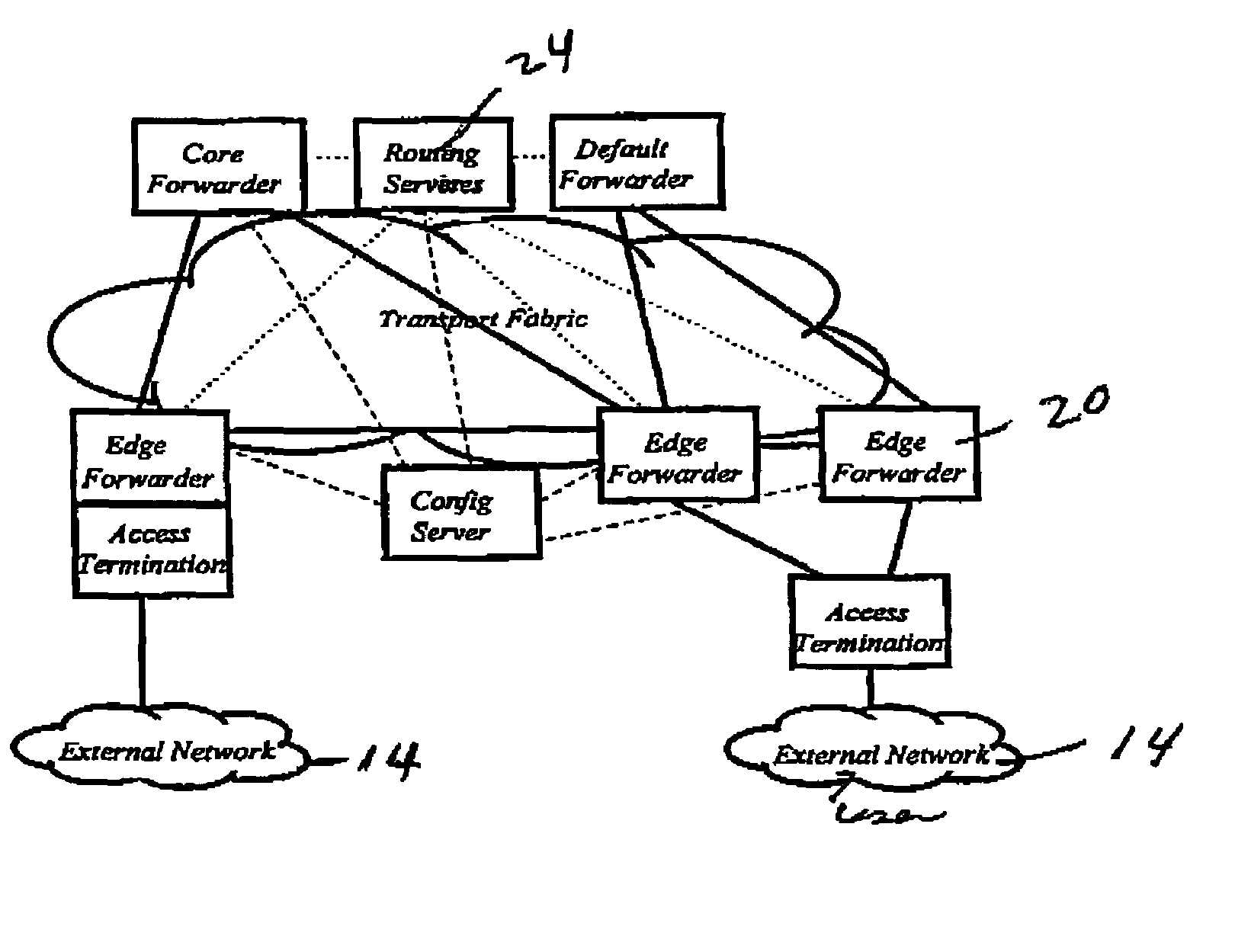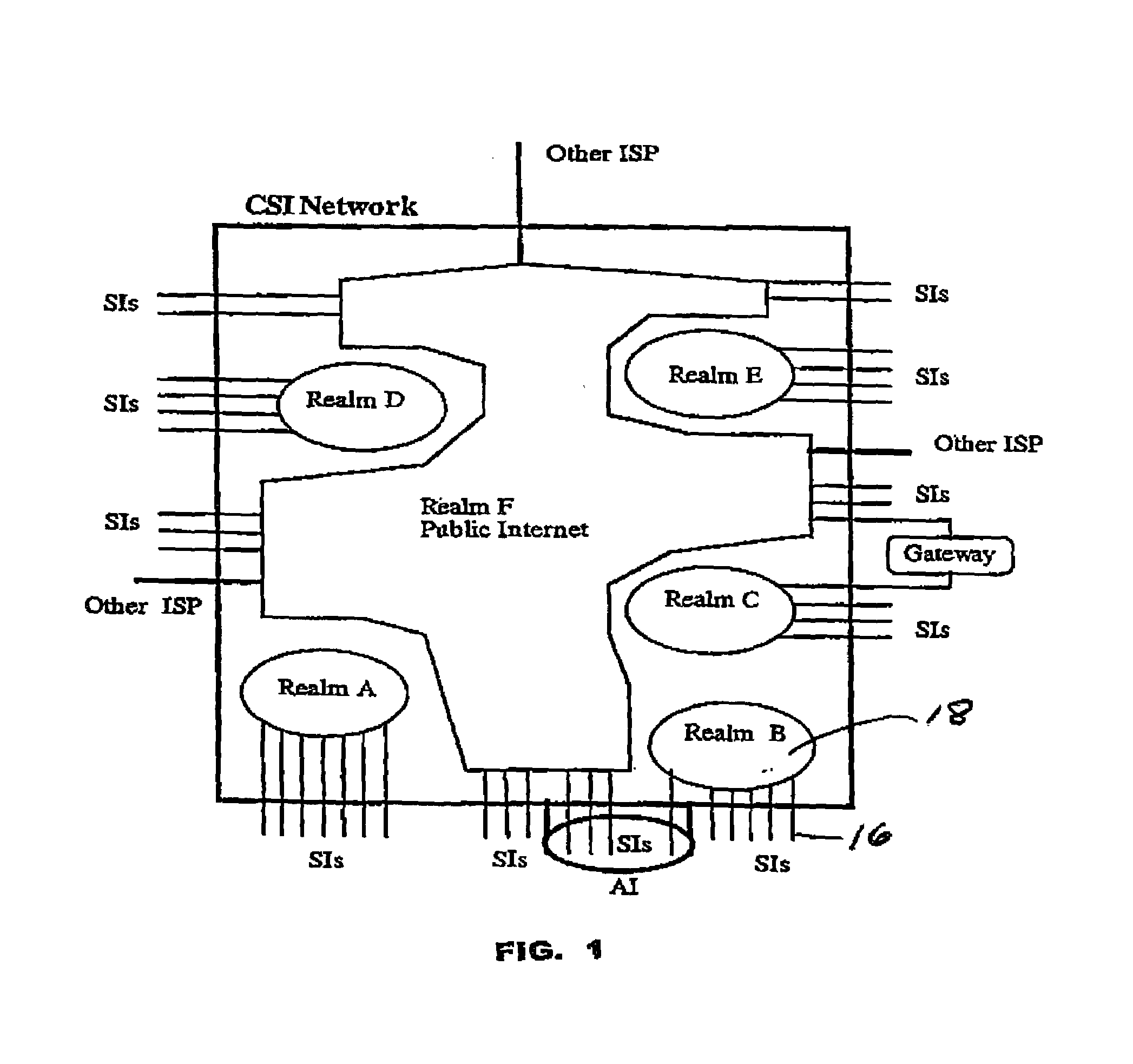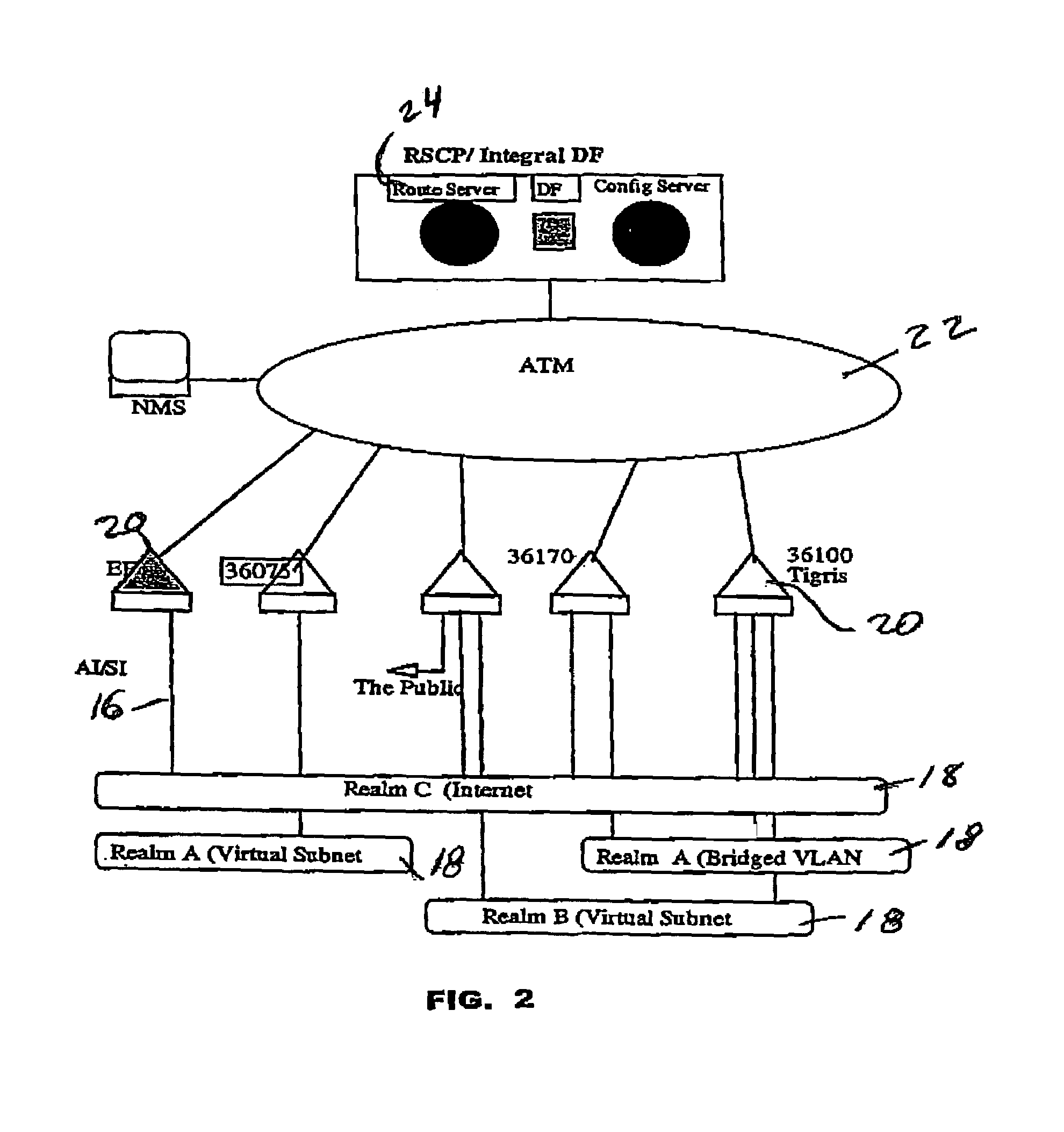Method and apparatus for forwarding packets
- Summary
- Abstract
- Description
- Claims
- Application Information
AI Technical Summary
Benefits of technology
Problems solved by technology
Method used
Image
Examples
Embodiment Construction
[0088]The CSI system description herein makes use of a number of well known and new terms, descriptions of which follow for easy reference. Reference may also be made to FIGS. 1, 2 and 3 for further information on how these terms are related to a CSI system.
[0089]Access Interface (AI): An external interface on a CSI system, virtual or physical. See also Management Interface, Configuration Interface, Control Interface, Service Interface and Transport Interface.
[0090]Access Termination (AT): A CSI component which provides external access interfaces.
[0091]ATM Adaptation Layer 5 (AAL-5): Used for carrying information over ATM.
[0092]Anycast Address: A special address used to initiate communications between an end system and any one of a group of others.
[0093]Address Resolution Protocol (ARP): A lower-layer mechanism by which a higher layer address can be resolved.
[0094]Autonomous System (AS): A collection of network equipment and networks that operate under a common BGP policy.
[0095]Bord...
PUM
 Login to View More
Login to View More Abstract
Description
Claims
Application Information
 Login to View More
Login to View More - R&D
- Intellectual Property
- Life Sciences
- Materials
- Tech Scout
- Unparalleled Data Quality
- Higher Quality Content
- 60% Fewer Hallucinations
Browse by: Latest US Patents, China's latest patents, Technical Efficacy Thesaurus, Application Domain, Technology Topic, Popular Technical Reports.
© 2025 PatSnap. All rights reserved.Legal|Privacy policy|Modern Slavery Act Transparency Statement|Sitemap|About US| Contact US: help@patsnap.com



